Historical Places in France are a magic carpet ride through time, from the Roman ruins to the grand chateaus and Gothic cathedrals. These landmarks reveal the country’s rich cultural and political heritage, showing snippets of revolution, empire, war, and rebirth. Whether you’re fascinated by history, architecture, or simply by discovery, you’ll find each monument to be a tale of its own. From Versailles’ glory to Normandy’s gravity, France is a top tourist destination for historical discovery, where each step reveals the strata of its rich and varied history.
10 Historical Places In France You Need To Visit
These historical places in France provide a comprehensive discovery of the country’s history-rich, multilayered past and fabled cultural heritage.
1. Palace Of Versailles, Versailles
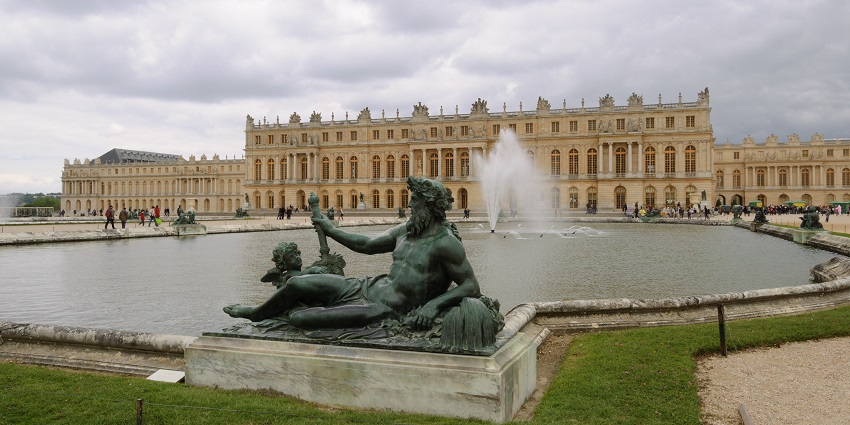
Photo: King Of Hearts / Wikimedia Commons
The Palace of Versailles is France’s most famous historic landmark, a symbol of the grandeur of royal life and the extravagance of Baroque buildings. What began as a humble hunting lodge was expanded by King Louis XIV into a dazzling palace that mirrored the absolute authority of the French monarchy. The Hall of Mirrors, where centuries ago treaties were signed, the neatly trimmed gardens, and the Grand Trianon can all be seen by visitors. A UNESCO World Heritage location, Versailles is more than a palace, it is a plunge into the heritage of the French royal court.
Location: Versailles, Île-de-France
Major Attractions: Columned Hall of Mirrors, Royal Chapel, Gardens of Versailles
2. Mont-Saint-Michel, Normandy
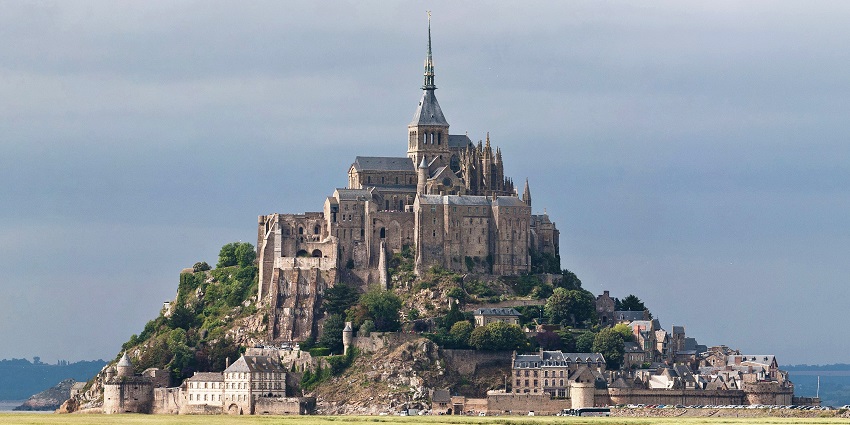
Photo: Diliff / Wikimedia Commons
One of France’s most beautiful ancient landmarks, Mont-Saint-Michel looms majestically out of the tidal sea along Normandy’s coast. This magical island has been a pilgrimage site since the 8th century, topped by an unbelievable medieval abbey dedicated to the Archangel Michael. A work of Gothic architecture, the abbey appears to defy gravity when it balances atop the rocky isle, inviting millions of visitors around the globe. As you drive up its twisting, curving streets lined with small shops and centuries-old stone buildings, each step brings a new perspective on its spiritual and historical richness.
Location: Normandy, France
Major Attractions: Mont-Saint-Michel Abbey, Bay Viewpoints, Museums
3. Notre-Dame Cathedral, Paris
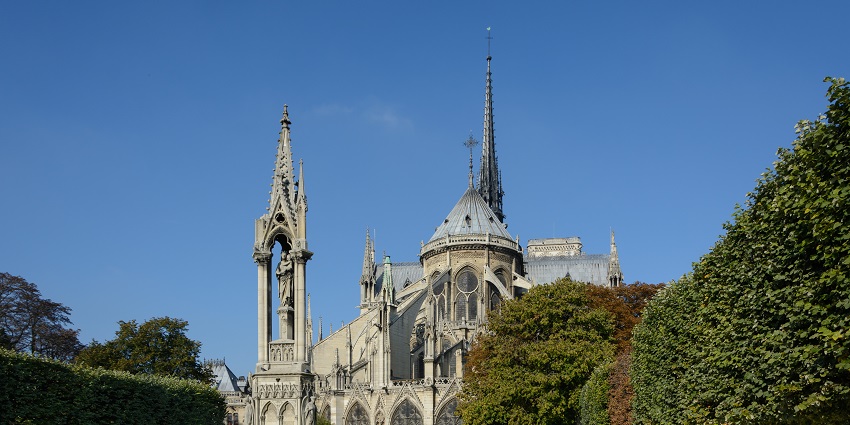
Photo: Uoaei1 / Wikimedia Commons
Notre-Dame Cathedral is an ageless symbol of Paris and one of France’s most important historical monuments. Famous for its stunning French Gothic architecture, the cathedral comprises classy sculptures, lofty spires, flying buttresses, and the famous rose windows that draw millions of tourists. It is where Napoleon Bonaparte was crowned emperor in 1804 and has survived wars, revolutions, and even a massive fire in 2019. A trip here is an odyssey to the spiritual and cultural center of France.
Location: Île de la Cité, Paris
Major Attractions: Gargoyles, Rose Windows, Crypt Archaeological Museum
4. Pont Du Gard, Occitanie
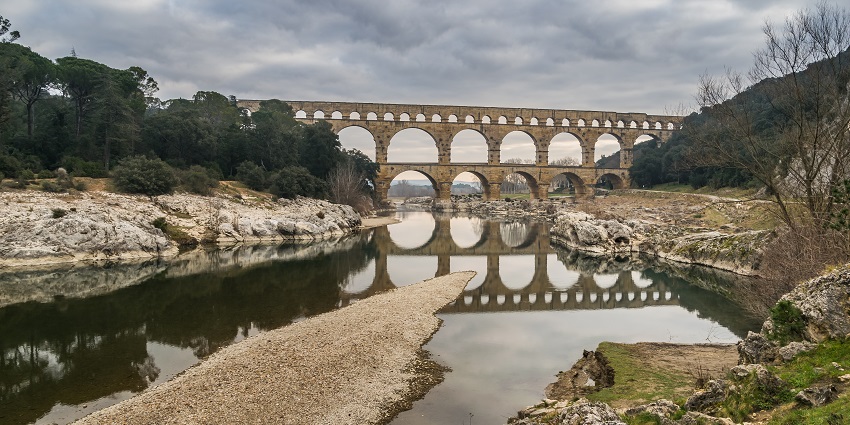
Photo: Krzysztof Golik / Wikimedia Commons
The Pont du Gard is a breathtaking example of ancient Roman genius and one of France’s oldest and most well-preserved historical monuments. Constructed in the 1st century AD, this colossal three-tier aqueduct bridge had already flowed freshwater 50 kilometers to the Roman city of Nîmes. Arched over the Gardon River, it tests the technical capabilities and architectural prowess of the Romans. As a UNESCO World Heritage Site, the Pont du Gard attracts tourists, historians, and nature lovers equally, all in one must-see experience that merges culture and nature.
Location: Vers-Pont-du-Gard, Occitanie
Major Attractions: Roman Aqueduct, Museum, Walking Trails
5. Château De Chambord, Centre-Val De Loire
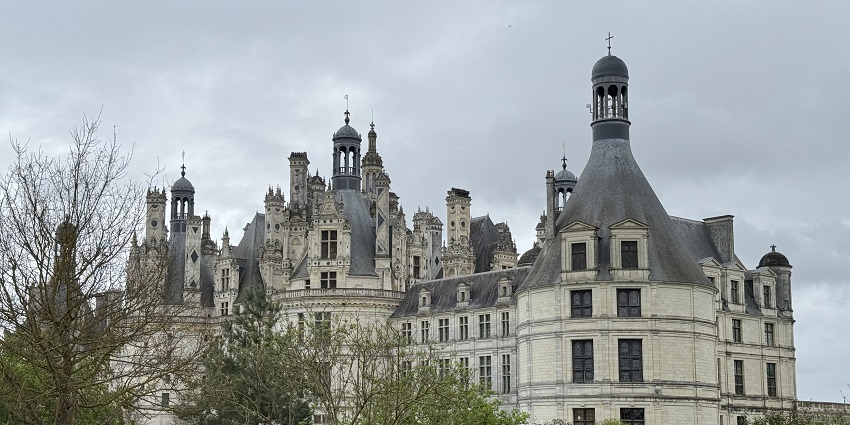
Photo: DgOlsen / Wikimedia Commons
Château de Chambord is among the largest and most stunning of France’s Loire Valley’s castles, which is famous for combining Renaissance and medieval styles in architecture. It was commissioned by King Francis I in the early 16th century to be used as a royal hunting château and a demonstration of French culture and power. It has a stunning 440 rooms, vast grounds, and the legendary double-helix staircase, which is claimed to have been designed or at least conceived by the great Leonardo da Vinci. Château de Chambord continues to be a historic site for its royal patrimony and architecture of France.
Location: Chambord, Loir-et-Cher
Major Attractions: Double Helix Staircase, Roof-top Views, Hunting Reserve
6. Carcassonne, Occitanie
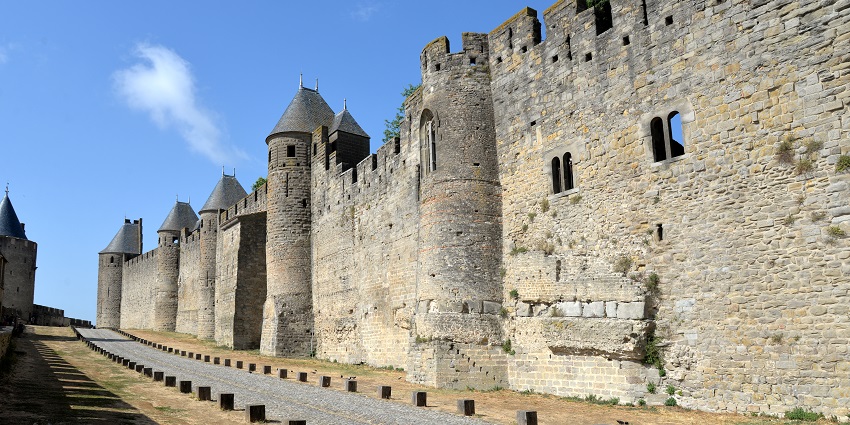
Photo: Calips / Wikimedia Commons
A breathtaking touristic medieval fortress town is renowned for its formidable ramparts, gigantic towers, and a plethora of towers that create a formidable silhouette against the horizon. The city traces its origin to the Gallo-Roman era and is thus connected to France’s oldest and most preserved ancient city. The cobblestone, narrow streets of the city, its quaint shops, and cosy houses have a fairy-tale, enchanting quality that captivates tourists. Carcassonne is not only an enthralling excursion to the Middle Ages but also a living cultural center.
Location: Carcassonne, Aude Department
Major Attractions: Château Comtal, Basilica of Saints Nazarius and Celsus
7. Arles Amphitheatre, Provence
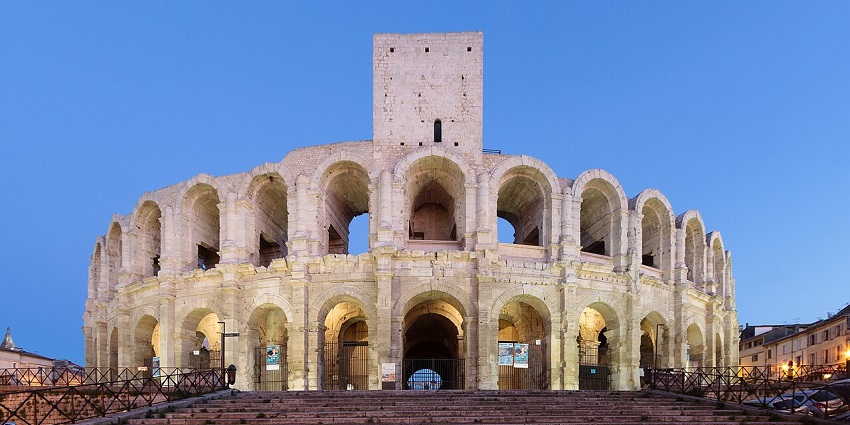
Photo: PierreSelim / Wikimedia Commons
The Arles Amphitheatre, one of the stunning Roman buildings constructed in about 90 AD, is a fine representation of ancient engineering and entertainment. This huge amphitheatre, located in the city of Arles, is one of the best-preserved Roman arenas in France. The amphitheatre is today a dynamic cultural hub, hosting many events including concerts, bullfights, and performances, lending its rich history a contemporary spin of entertainment. The imposing elliptical shape of the Arles Amphitheatre, strong arches, and masonry structure are all a reflection of the engineering ability of the Romans.
Location: Arles, Bouches-du-Rhône
Major Attractions: Roman Arena, Theatre, Necropolis of Alyscamps
8. Château De Fontainebleau, Île-De-France
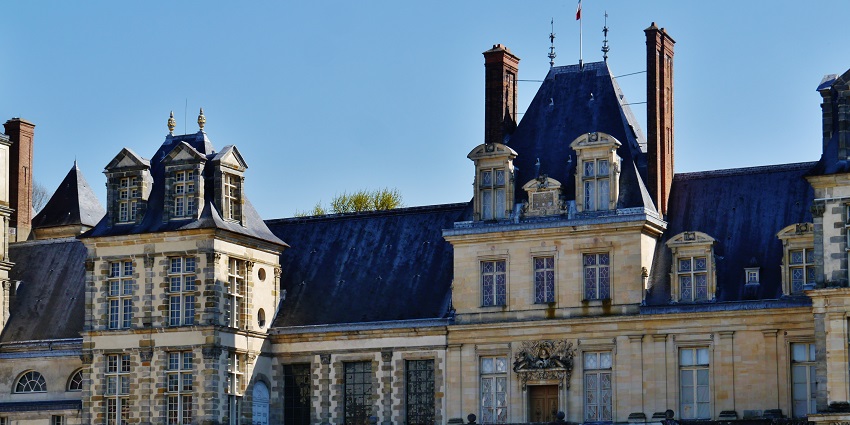
Photo: Zairon / Wikimedia Commons
Château de Fontainebleau is a stunning royal palace that was once occupied by French monarchs for more than eight centuries, from Louis VII to Napoleon Bonaparte. The old palace is a unique blend of architectural styles such as Renaissance, Medieval, and Classical influences, an indication of the several phases of French history that it has seen through. Fontainebleau was not only a royal château but also a political stronghold and hub of artistic creativity, with lavish decorations, magnificent reception rooms, and beautifully landscaped gardens. The château is a reflection of France’s rich cultural history.
Location: Fontainebleau, Seine-et-Marne
Major Attractions: Gallery of Diana, Grand Apartments, Napoleon Museum
9. Sainte-Chapelle, Paris
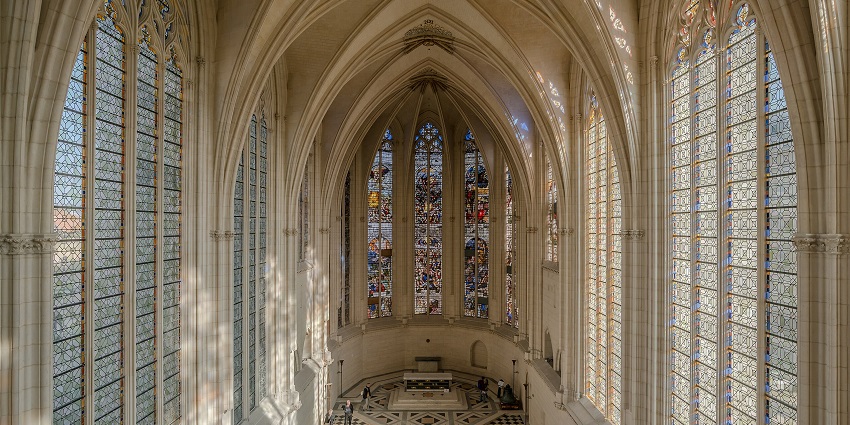
Photo: DXR / Wikimedia Commons
The 13th-century Sainte-Chapelle is one of Parisian Gothic architecture. Originally built to keep valuable holy remains such as Christ’s Crown of Thorns, this royal chapel is famous for its remarkable stained-glass windows. The windows contain an unprecedented 1,113 scenes from the Old and New Testaments of the Bible, bathing the chapel interior in a stunning tapestry of colour and light. Sainte-Chapelle’s beautiful stone carvings, lofty arches, and beautiful details make it one of France’s most loved historic treasures.
Location: Île de la Cité, Paris
Major Attractions: Stained Glass Windows, Lower Chapel, Vaulted Ceilings
10. Les Invalides, Paris
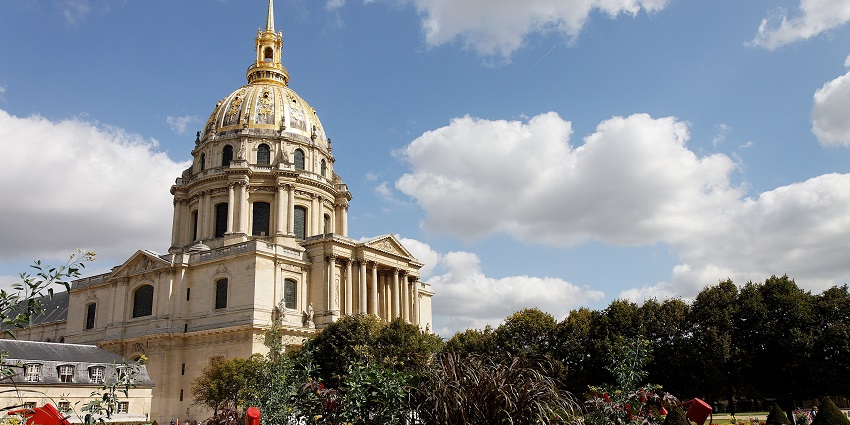
Photo: Thesupermat / Wikimedia Commons
Les Invalides in Paris was initially constructed in the 17th century as a hospital and retirement home for soldiers who were injured. Over time, it became a complex that reflected in grandeur of France’s glorious history of warfare. Les Invalides now houses different museums that display weapons, uniforms, and artefacts detailing how French military prowess evolved. The site is also renowned for the grave of Napoleon Bonaparte, whose breathtaking tomb sits beneath the golden dome’s historic outline. The blend of historic importance, architectural splendour, and cultural heritage makes Les Invalides one of France’s most significant and beloved historic sites.
Location: 7th arrondissement, Paris
Major Attractions: Napoleon’s Tomb, Army Museum, Dome Church
France is a treasure trove of thick history, and sites like palaces, cathedrals, castles, and Roman arenas are full of information about its past cultural heritage. Historical places in France promise an unforgettable experience of the past and cultural heritage. For a better experience of France’s past heritage, plan your next holiday with TripXL and explore the best that these famous sites have to offer.
Cover Photo: Bas Linders / Pexels


 WhatsApp
WhatsApp
 Twitter
Twitter









